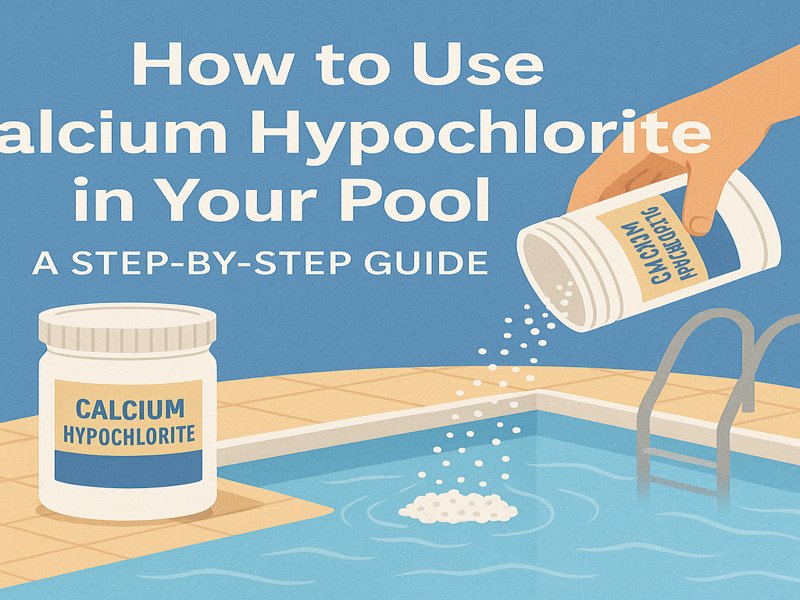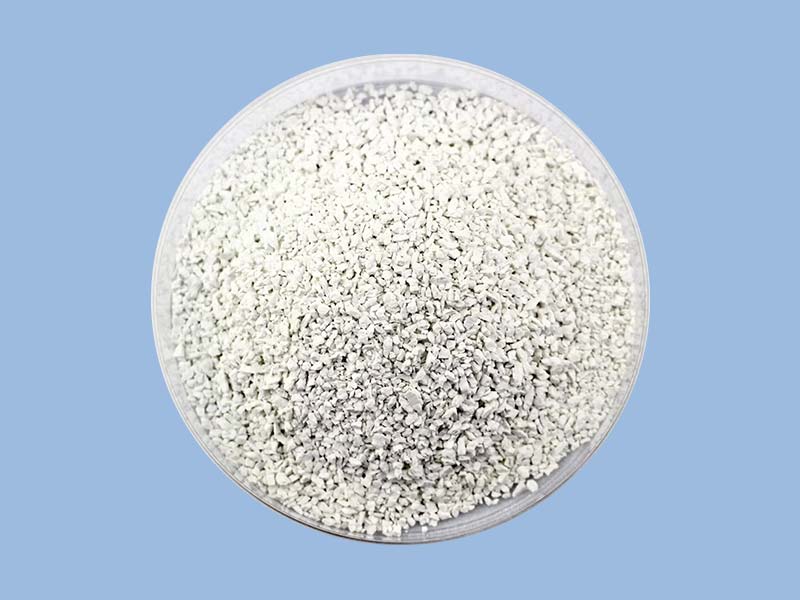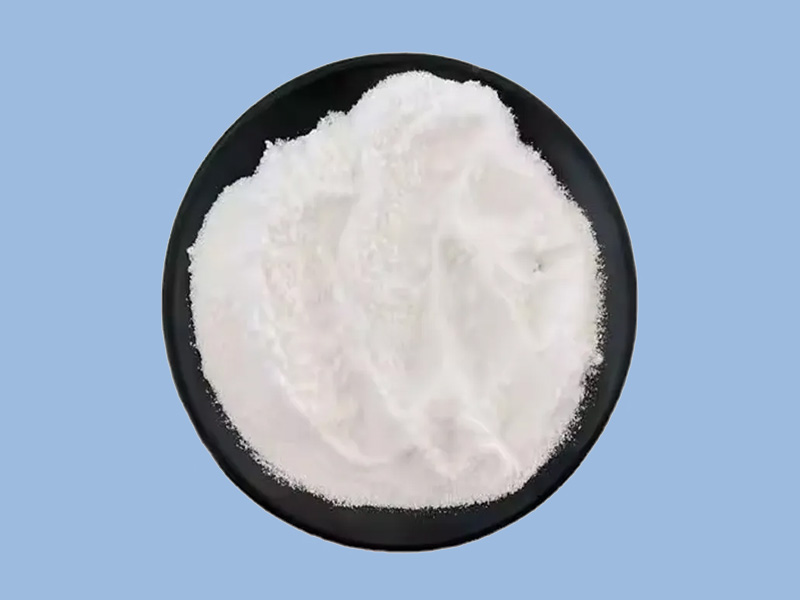Cal hypo, also known as calcium hypochlorite, is a strong and popular chlorine chemical used to clean swimming pools. Whether you’re a first-time pool owner or a seasoned maintenance professional, knowing how to use calcium hypochlorite correctly is essential for achieving safe, crystal-clear water and maintaining a healthy swimming environment.

What Is Calcium Hypochlorite?
Calcium hypochlorite (Ca(ClO)₂) is a white or grayish powder, granule, or tablet used to sanitize pool water. It is renowned for having between 65% and 78% accessible chlorine by weight.
- High disinfection power
- Quick action against algae, bacteria, and viruses
- Long shelf life in dry storage
It is not stabilized, meaning it does not contain cyanuric acid (CYA)—a chemical that protects chlorine from sunlight degradation. This makes it ideal for shock treatments or when you want a strong chlorine boost without increasing CYA levels.
Why Use Calcium Hypochlorite?
Here are some advantages of using calcium hypochlorite in your pool:
✅ Powerful Oxidizer: Quickly kills organic contaminants, algae, and bacteria.
✅ Cost-Effective: More economical per dose compared to liquid chlorine.
✅ Storage-Stable: Long shelf life if kept dry and sealed.
✅ Versatile: Fits pools in both homes and businesses.
✅ No Cyanuric Acid: Great for pools that already have high CYA levels.
When Should You Use Calcium Hypochlorite?
You can use Cal Hypo in the following pool scenarios:
- Regular chlorination (with appropriate feeder systems)
- Weekly or bi-weekly shocking
- Algae removal
- After heavy pool usage or rainfall
- Before or after opening/closing the pool for the season
Product Types for Calcium Hypochlorite
| Form | Description | Use Case |
| Granules | Fast-dissolving loose powder or crystals | Shock treatments and spot cleaning |
| Tablets | Compressed for slow and steady release | Daily chlorination with feeders |
| Briquettes | Similar to tablets but shaped differently | Specialized feeder systems |
Safety First: Handling Calcium Hypochlorite
Before you begin, understand that calcium hypochlorite is highly reactive and requires careful handling.
Precautions:
- When working with granules, always use a mask, gloves, and goggles.
- Never mix with other pool chemicals, especially acid or stabilized chlorine—this can result in violent reactions or explosions.
- Reusing containers for additional chemicals is not advised.
Tools and Supplies You’ll Need
To safely and effectively use calcium hypochlorite, gather these items:
- Cal hypo product (granules or tablets)
- Clean plastic bucket
- Pool test kit or test strips
- Protective gloves and eyewear
- Pool brush or skimmer net
- Measuring scoop or cup
- Stirring stick (non-metallic)
Step-by-Step Guide to Using Calcium Hypochlorite
Step 1: Test Your Pool Water
Use a liquid test kit or test strips to test the pool’s water before adding any chemicals. Pay attention to:
- Free chlorine (FC)
- pH
- Alkalinity
- Calcium hardness
- Cyanuric acid (CYA)
Ideal pool water chemistry for Cal Hypo use:
- FC: 1–3 ppm (or higher for shocking)
- pH: 7.2–7.6
- Alkalinity: 80–120 ppm
- Calcium hardness: <250 ppm if possible (to avoid over-hardening)
- CYA: 30–50 ppm (if used with stabilizer)
Step 2: Choose the Right Time
Cal hypo should ideally be added:
- In the evening or at night, when sunlight won’t degrade chlorine quickly.
- To guarantee uniform distribution when the pool pump is operating.
- When no one is swimming, as chlorine levels will be temporarily elevated.
Why this matters: Knowing current levels helps you determine how much cal hypo is needed and whether additional adjustments are required after treatment.
Step 3: Calculate the Dosage
Dosage depends on:
- Your pool’s volume (in gallons or liters)
- Purpose of treatment (routine chlorination or shock)
Example Dosage for 10,000 gallons (37,854 liters):
- For routine maintenance: ~1–2 ounces of 65% cal hypo will raise FC by 1 ppm.
- For shock treatment (10 ppm rise): ~10–20 ounces of 65% cal hypo.
Use a dosage calculator or consult product packaging for exact guidance based on the strength and form (granules/tablets) you’re using.
Step 4: Pre-Dissolve the Granules (If Needed)
While some Cal-Hypo products are labeled as direct application, many experts recommend pre-dissolving the granules in a bucket of water:
- Pour warm water into a cleaned plastic bucket until it is three-fourths full.
- Slowly add the required amount of cal hypo while stirring with a plastic stick.
- Let it dissolve completely before adding to the pool.
Caution: Always add chemical to water, not water to chemical, to avoid violent reactions.
Step 5: Add It to Your Pool Safely
Once pre-dissolved:
- Pour the solution equally into the deep end of the pool after walking around its perimeter.
- Avoid pouring directly in front of pool returns or skimmers.
- Keep the pump running for at least 4–8 hours to circulate and distribute chlorine.
If using tablets, place them in:
- A floating dispenser
- An erosion feeder
- A skimmer basket (only if recommended by the manufacturer)
Step 6: Retest After a Few Hours
After 4–8 hours, retest the pool water to:
- Confirm that free chlorine levels are within the safe range (1–3 ppm for swimming).
- Adjust pH if needed (since cal hypo raises pH).
- Check for cloudiness or residue—if present, run the filter longer or vacuum the pool.
Common Scenarios and Tips
Weekly Maintenance Chlorination
Use a small dose (1–2 oz per 10,000 gallons) at night once or twice per week to keep FC levels stable.
Algae Outbreak (Shock Treatment)
Raise chlorine to 10–20 ppm, depending on severity. Keep the pump running around-the-clock until the water clears, then brush the walls and floor to get rid of algae biofilm.
After Heavy Use or Rain
Rain and bather load can introduce contaminants. Use Cal-Hypo to quickly raise chlorine levels and rebalance.
Opening or Closing the Pool
Shock with cal hypo to sanitize and oxidize contaminants during pool opening or just before covering the pool for winter.
Troubleshooting Calcium Hypochlorite Use
| Issue | Possible Cause | Solution |
| Cloudy water | Undissolved particles or calcium scaling | Brush pool, run filter, and pre-dissolve next time |
| White residue | Overuse or improper dispersion | Vacuum to waste, pre-dissolve before dosing |
| High pH | Cal hypo’s alkalinity (~pH 11–12) | Lower pH with muriatic acid or sodium bisulfate |
| High calcium hardness | Frequent cal hypo use without water replacement | Monitor hardness; dilute pool water as needed |
| Rapid chlorine loss | No stabilizer present | Add cyanuric acid (CYA) separately if needed |
Storage and Handling Tips
Calcium hypochlorite is a strong oxidizer and must be handled with care.
- Never mix with other pool chemicals, especially acids or stabilizers.
- Use gloves and safety goggles when handling.
- Store in original containers with proper labeling.
- Keep away from combustible materials and out of reach of children and pets.
Hazardous gas emissions, chemical spills, and fire hazards can result from improper storage.
Environmental Considerations
While Cal hypo is effective, overuse can lead to:
- Calcium buildup in pool water
- Corrosion of equipment if pH or calcium levels become imbalanced
- Excess chlorine runoff in wastewater affects local ecosystems
Use only the required dosage, monitor water chemistry, and never discharge untreated chlorinated water into natural waterways.
Common Mistakes to Avoid
- Adding cal hypo with a high pH can lessen the efficacy of chlorine.
- Pouring directly on the liner – May cause bleaching or fading.
- Mixing with other chlorine types – Can lead to violent reactions.
- Under-dosing or over-dosing – May lead to poor sanitation or skin irritation.
- Poor circulation – Always run the pump after treatment.
If you are unsure of the correct dosage or use for your particular pool system, we, as the manufacturer of calcium hypochlorite products, can provide you with instructions.



